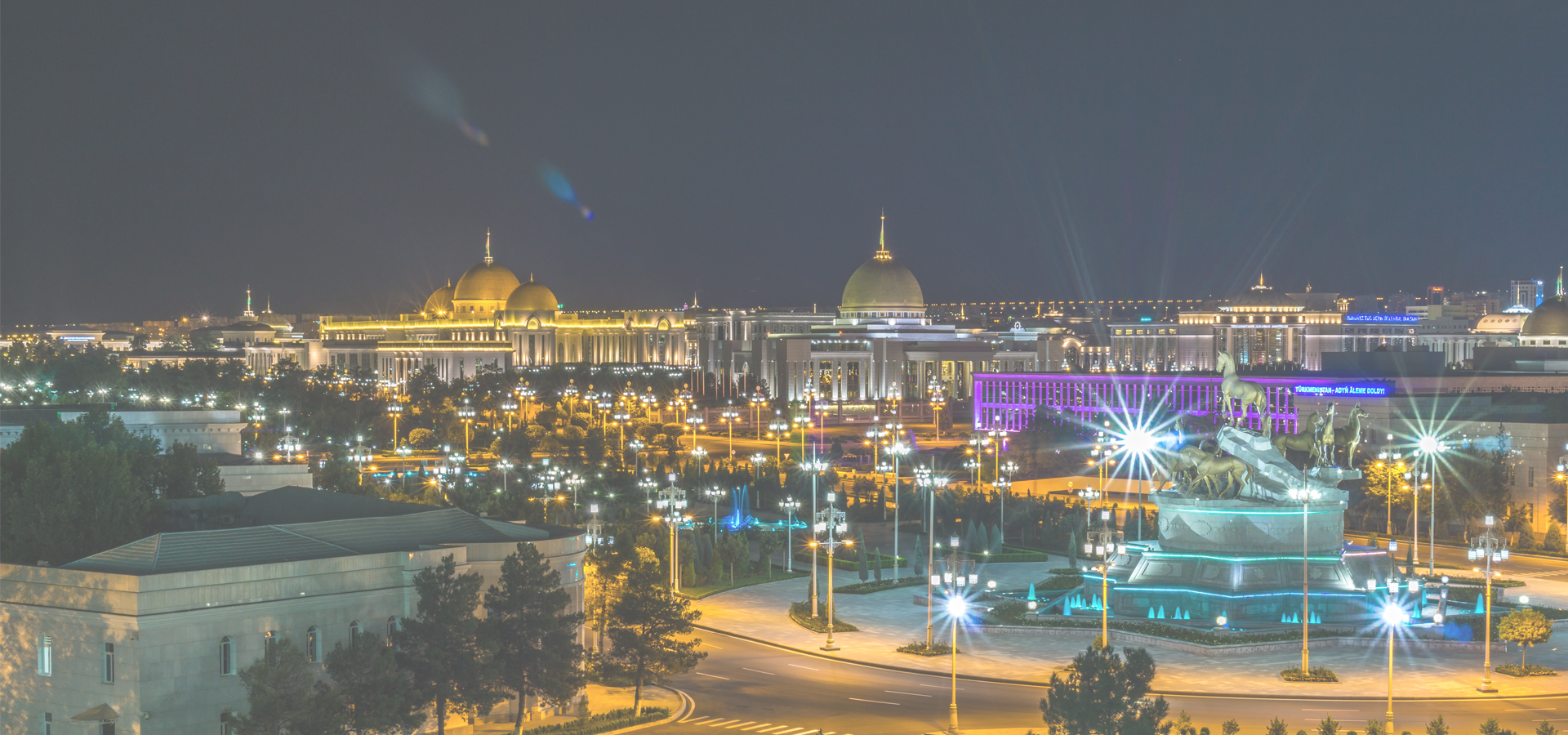Türkmenabat, Lebap Province, Turkmenistan
🇹🇲 Türkmenabat, formerly and since medieval times, Chardzhou and in ancient times Āmul, is the second-largest city in Turkmenistan and the capital of Lebap Province. From 1924 to 1927 it was briefly renamed Leninsk in honor of Vladimir Lenin.
Türkmenabat is located at an altitude of 187 m (614 ft) on the banks of the Amu Darya River, near the border with Uzbekistan. Türkmenabat is at the centre of Lebap province, which has borders with three provinces in Turkmenistan: Mary, Ahal and Daşoguz. The province also borders Uzbekistan and Afghanistan.
Some 70 km (43 miles) south of Türkmenabat in the East Karakum Desert is the Repetek Nature Reserve, famed for its zemzen, or desert crocodiles.
A modern industrial city, Türkmenabat's history spans 2,000 years. In ancient times, it was known as Āmul (to be distinguished from the Iranian city of Amol). The river Amu Darya is said to mean River of Āmul, named after this ancient city. Türkmenabat was the hub in an intersection of three routes of the Great Silk Road leading to Bukhara, Khiva and Merv. For centuries, Āmul was an important town of the Uzbek feudal khanate (later emirate) of Bukhara.
When the Russian Empire began annexing Central Asian Turkestan, Āmul was surrendered to Russians by the Bukhara emirate, which subsequently became a vassal of Russia and pledged allegiance to the Russian emperor. The modern city was founded in 1886, when Russian Cossacks settled in Uralka in what is now the eastern part of Türkmenabat, naming their settlement New-Chardjuy. Settlement here was necessary to complete construction of the Trans-Caspian railway.
After the revolution of 1917, during which the Bolsheviks came into power in Russia, communists merged the former Central Asian oblasts of the Russian Empire along with the former Khanates of Khiva (Khorezm) and Bukhara into republics on the basis of nationality. Thus, Türkmenabat (known as Chardjuy at that time) was passed to the newly created Turkmen Soviet Socialist Republic in order to reduce the territory and power of Uzbekistan, where anti-Soviet separatist movements were prevalent. Its role as a railway junction, and the high fertility of the Amu Darya region, made it the major trade centre for agricultural products in the north-east region of the country. The city features food processing, textile (cotton processing and silk) factories. Çärjew was Turkmenistan's industrial and transport hub during the Soviet period, but most of these related jobs and transport opportunities have been relocated to Ashgabat or closed since Turkmenistan's independence.
From the article about Chardjuy in the Brockhaus and Efron Encyclopedic Dictionary (beginning of the 20th century):
Chardjuy is an urban settlement formed near the Amu-Darya station (1070 c. from Krasnovodsk) of the Central Asian Railway, on the left bank of the Amu-Darya River, on land ceded by the emir of Bukhara to the Russian government. There are 4 068 inhabitants (2 651 men, 1 417 women), including 3 501 Russians. There are wide straight streets, enough greenery, many shops, and a rather lively bazaar. Chardjuy is an important trade centre, where goods going to Bukhara, Khiva, and partly to Afghanistan, are loaded onto river vessels. The steamboat of the Amu Darya fleet maintains communication between Patta Gissar (Termez) in the south and Petro-Aleksandrovsky (Khiva)… At 16 verst from Chardjuy lies the rather large Bukharan city of Chardjuy (native Chardjuy), the centre of Chardjuy province (bekstvo), with the remains of walls and a fortress; 15 thousand inhabitants. Old Chardjuy (Amu-Darya) is characterized by a lively trade exchange. In 1900, 1820244 pd arrived at the station. (military supplies, sugar, timber, building material, iron, flour, tea, rice, etc.); Sent from the Chardjuy station in the same year: 963382 (leather, carpets, sheepskin, cotton seed, cotton - 516641 pd, wool, etc.).
The third edition of the Great Soviet Encyclopedia wrote of the city, Chardzhou, city, centre of Chardzhou oblast' of Turkmen SSR, pier on the left bank of the Amu Darya (where the Krasnovodsk-Tashkent railroad line crosses). From Chardzhou begins the Kungrad-Makat rail line. 113 thousand residents in 1977 (51 thousand in 1939). Arose in the 1880s as a Russian fortification on the territory of the Khanate of Bukhara. From 1886 the city, named New Chardzou, was a commercial and transportation hub of Central Asia (in 1888 the Central Asian Railway came through Chardzhou). In 1918-24 part of the Turkestan ASSR; from 1924 Turkmen SSR. From 1937 named Chardzhou. In 1939-63 and from 1970 an oblast' center.
Ashgabat Time

Türkmenabat has a population of over 254,000 people. Türkmenabat also forms the centre of the wider Lebap Province which has a population of over 1,334,500 people.
To set up a UBI Lab for Türkmenabat see: https://www.ubilabnetwork.org Twitter: https://twitter.com/UBILabNetwork
Twin Towns, Sister Cities Türkmenabat has links with:
🇹🇷 İzmir, Turkey🇺🇸 Gaithersburg 39.109
🇺🇸 Cincinnati 39.104
🇺🇸 Montgomery County 39.084
🇺🇸 Lawrenceburg 39.083
🇺🇿 Yangibozor 64.183
Locations Near: Türkmenabat 63.5836,39.119
🇺🇿 Yangibozor 64.183,39.733 d: 85.6
🇺🇿 Bukhara 64.433,39.767 d: 102.5
🇹🇲 Baýramaly 62.15,37.617 d: 208.6
🇦🇫 Maymana 64.75,35.933 d: 368.9
🇺🇿 Samarkand 66.967,39.65 d: 296.7
🇺🇿 Yangibozor 60.533,41.7 d: 386
🇦🇫 Mazar-i-Sharif 67,36.75 d: 398.9
🇦🇫 Mazar-e Sharif 67.117,36.7 d: 410.3
Antipodal to: Türkmenabat -116.416,-39.119
🇵🇫 Papeete -149.566,-17.537 d: 16017.2
🇨🇱 Valdivia -73.233,-39.8 d: 16343.6
🇨🇱 San Pedro de la Paz -73.1,-36.833 d: 16245.9
🇨🇱 Concepción -73.05,-36.817 d: 16241.1
🇨🇱 Chiguayante -73.017,-36.917 d: 16241.6
🇨🇱 Port Montt -72.933,-41.467 d: 16356.8
🇨🇱 Puerto Montt -72.933,-41.467 d: 16356.8
🇨🇱 Temuco -72.667,-38.733 d: 16267.8